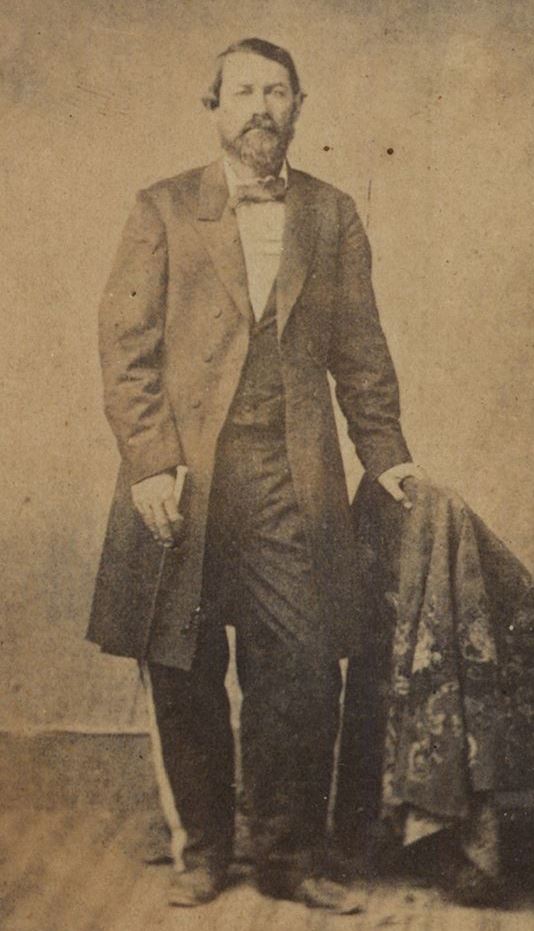Juan Nepomuceno Cortina and the American Civil War
In July, 1864, Union Forces abandoned Brownsville, leaving Juan Cortina facing hostile Confederates to his north and equally hostile Austro-French imperialists advancing on Matamoros from the south. Cortina made plans to cross some 1,500 men of his Cortina Brigade to the north bank of the river where they could join Union forces. As many as 300 of Cortina’s Exploradores del Bravo with three pieces of artillery did successfully cross the river on September 8, 1864, where they joined with Federal forces in an attack on Confederates near Palmito Ranch. In the fighting, twelve Cortinistas were captured and held as prisoners of war. The presence of the Cortinista army in the United States touched off a firestorm of diplomatic protests from the French.
After surrendering Matamoros and a brief stint in the Imperial Army, Cortina turned against the French in April 1865, and once again opened friendly relations with the Federals, who were holding Brazos Island and a sliver of the Rio Grande. With the conclusion of the Civil War, Cortina even opened a recruiting office in Brownsville. While on a tour of the Rio Grande frontier in the summer of 1865, General William Tecumseh Sherman met with Cortina in Brownsville and war materials began flowing into Mexico to support the Liberals and Benito Juarez in the bloody struggle against the Imperialistas. By late June 1866, the remnants of the once grand Imperial army evacuated Matamoros and Cortina rode triumphantly into the city. For years to come, as the Liberals fought one another for power in Mexico, Cortina continued to compete for the hearts and minds of the people of Tamaulipas and South Texas.
Listen
En julio de 1864, las tropas unionistas abandonaron Brownsville, dejando a Juan Cortina frente a los confederados hostiles, al norte, y con los imperialistas franco-austríacos avanzando hacia Matamoros desde el sur. Cortina trazó un plan para hacer cruzar 1 500 efectivos de la Brigada Cortina a la ribera norte del río, donde podrían unirse a las fuerzas de la Unión, y el 8 de septiembre de 1864, hasta tres centenares de sus hombres pertenecientes a los Exploradores del Bravo, con tres piezas de artillería, lo lograron. Se unieron a las tropas federales en un asalto a los confederados cerca del Rancho Palmito y, en el combate, doce cortinistas fueron apresados y retenidos como prisioneros de guerra. La presencia de la tropa cortinista en los Estados Unidos desató una tormenta diplomática de protesta por parte de los franceses.
Después de la rendición de Matamoros y de una breve singladura en el ejército imperial, Cortina se rebeló contra los franceses en abril de 1865, y de nuevo estableció relaciones amistosas con los federales, que retenían la Isla de Brazos así como una estrecha franja del Río Grande. Con el final de la Guerra de Secesión, Cortina abrió incluso una oficina de reclutamiento en Brownsville, y el general William Tecumseh Sherman, durante una gira por la frontera del Río Grande en el verano de ese mismo año, se reunió con Cortina en esa misma ciudad: un flujo de material bélico empezó a entrar en México con destino a los liberales y a Benito Juárez, en su sangrienta disputa contra los imperialistas. Hacia finales de junio de 1866, habiéndose retirado de Matamoros el majestuoso ejército imperial, Cortina cabalgó triunfal de regreso a la ciudad. En los años que siguieron, los liberales se disputaron entre sí el poder en México y Cortina siguió compitiendo por ganarse el corazón y la voluntad de las gentes de Tamaulipas y del Sur de Texas.
Escucha
Details
Location: End of Hwy South of Mouth of the Rio Grande

